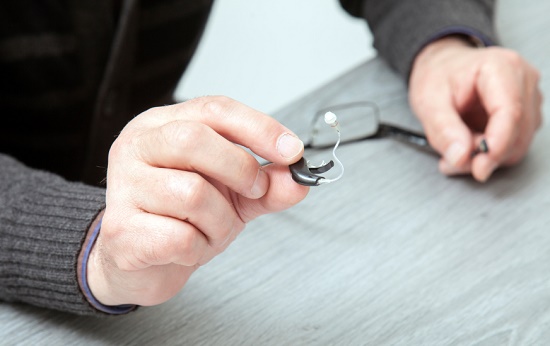
Murphy’s Law tells us that “if anything can go wrong, it will.” A better version might be that “things will go wrong in any given situation, if you give them a chance.”
That’s the reason we change the oil in our cars, replace the filters, and rotate the tires. We’re trying to preserve our investment and lengthen its life.
You should certainly consider hearing aids in the same way. If you give things an opportunity to go wrong, they will; but if you’re proactive in your maintenance, your hearing aids can endure and perform properly for several years.
So what are the things that can go wrong? Here are the three primary threats to your hearing aids and what you can do to safeguard against them.
1. Physical damage
Opponent # 1 is physical damage. Hearing aids consist of vulnerable electronics that are prone to damage from shock. To defend against this, make certain to store your hearing aids in their storage cases anytime you’re not using them.
A good guideline is that your hearing aids should be either in your ears or in the storage case at any given time. Placing your hearing aids exposed on any surface is just asking for Murphy’s Law to come and shove them off. Likewise, when you’re putting in or removing your hearing aids, it’s best to do this over a soft surface in the event they fall.
In addition, remember to check and replace the batteries frequently. You’re not doing the electronics any favors by having the hearing aids function on low battery power.
2. Moisture
Electronic devices and water do not mix, which anyone who’s dropped a mobile phone in the sink understands all too well. Once submerged, there’s very little that can be done. But it takes a lot less than complete submersion in water to ruin your hearing aids.
Water, in the form of mist, can still work its way into the hearing aids and begin causing chaos. As a result, you should refrain from using hairspray, bug spray, or any other sprays while wearing your hearing aids. Additionally, remember that drastic changes in temperature can generate condensation, for example going from a climate-controlled room to the outdoors. If this happens, make sure to dry off any moisture that develops.
We also suggest not storing your hearing aids in the bathroom, as the condensation can generate issues. This is yet another reason that your bedside table drawer is probably the ideal place to store your hearing aids when not in use.
3. Earwax and dirt
Even if you’ve defended your hearing aids against physical destruction and water with appropriate storage and the prevention of moisture, you’ll still need to protect against enemy # 3: dirt and grime.
Earwax, dirt, and debris can accumulate on the hearing aids, blocking the speakers, ports, and other elements. To guard against this, 1) maintain adequate ear hygiene, and 2) clean and sanitize your hearing aids each day.
Concerning cleaning and sanitizing your hearing aids, make sure to use only the tools supplied by your hearing professional. Your hearing professional can supply cleaning kits and instructions specifically for your type of hearing aids.
And finally, think about purchasing a hearing aid sanitizer. Sanitizers utilize ultraviolet light to comprehensively kill pathogens, all while supplying a safe place for storage.

